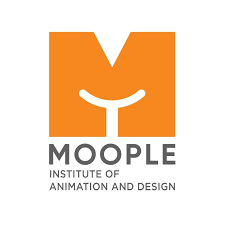The world of digital design is constantly evolving, and staying ahead requires mastering key skills. One of the essential abilities is bringing static visuals to life. A motion graphics course is the perfect tool for learning these design techniques. The course equips you with the skills needed to transform simple designs into captivating motion graphics. After all, the digital world is all about capturing attention and conveying the correct messages in visual formats.
Your content should be visually appealing to your audience so that they engage longer in your content. In this blog, let’s explore how a motion graphics course is beneficial for you in revolutionising your creative thinking and process.
What is Motion Graphic Design?
Motion graphics use graphic design elements to craft compelling visuals. These are much beyond your traditional animations, which only focus on storytelling with narratives and characters.
Motion graphics focus on moving your shapes, text, and other design elements to reflect what you want to convey to your audience. This is primarily employed across various contexts, such as advertisements, social media content, explainer videos, and corporate presentations.
Benefits of a Motion Graphics Course
Learning motion graphic design is beneficial in several ways:
1. Enhances the Overall Visuals of Your Content
Enhancing your content’s visuals is crucial for your audience to connect with it. The moving graphic elements can transform your still information into a more engaging and conversational format. This is particularly important in conveying complex ideas to a larger audience.
2. Effectuating What You Want To Convey
Motion graphics courses help you improve your presentation and reach your audience. It teaches you the intricacies of graphic design concepts to make your element and content visually appealing. It can be leveraged for various purposes, from illustrating your process to showcasing your business product with key highlights.
3. Increase Your Engagement
The digital world is all about how engaging your audience is with your content. Motion graphic courses are excellent with their animating power. The dynamics of motion graphics can keep your viewers engaged for a longer time with your content. This will, in turn, generate higher audience engagement rates.
4. Brand Identity
Motion graphic designs offer a unique opportunity to reinforce your brand’s identity. A brand’s identity and reputation have much to do with creative and consistent motion elements. By crafting content with your brand’s colours, fonts, and styles, you can improve brand recognition for cohesive audience engagement.
5. Versatility
Motion graphics courses train you to create versatile content that can be used across several platforms like social media, websites, videos, and presentations. The versatility of your content resonates well with your audience.
Techniques to Enhance Motion Graphics For Improved Data Visualisation
To improve your data visualisation through motion graphics, consider adopting the following techniques:
1. Small Multiples and Animating Visuals
Small multiples provide you with a lot of charts and graphs. These are essential for a detailed comparison of datasets containing several variables. Animating visuals showcases several changes within the same dataset. The latter offers more compelling narratives specifying your content’s growth and decline.
2. Sound Effect
Sounds reach your audience at a frequency different from your visuals. They transform how viewers perceive your content and interact with several data points. For instance, to complement the visuals of the stock market, you could leverage rising and falling tones.
3. Interactive Elements
The more interactive your content is, the better your audience engagement will be. The interactivity of the content controls where your viewer’s attention wanders. Try this with hovering effects revealing more sensitive data. Interactivity makes your content not only visually appealing but also user-friendly and intuitive.
4. Data Morphing
The motion graphics course equips you with data morphing skills. This skill is essential for your content to transition between two graphical representations smoothly. This illustrates the relationship and data transitions more evidently.
Foundational Principles for Creating Content with Motion Graphic Design
Creating compelling motion graphics using data visualisation features requires a roadmap of basic foundational principles. Here are the fundaments to make your complex data more engaging and comprehensible:
1. Define Your Goal
Every data visualisation should begin with a starting point of defining the end goal. Focus on what you want to convey to your audience. Do you wish to highlight the growing trends or showcase transitions over time? Clarifying your end goal is crucial in understanding and defining your audience.
2. Understand Who Your Target Audience Should Be
The next step is identifying who your target audience is. A technical audience will be more interested in viewing complex representations than a general one keen on viewing simple ones. Try understanding your audience’s expertise level and then sit down to craft your content.
3. Picking the Right Chart
Your data type often specifies what chart types you need for your motion graphic design. Line charts are perfect if you are willing to showcase the transitions over time. Otherwise, bar charts are better at comparing two quantities.
4. Staying Organised
The introductory lesson taught in the motion graphics course is the importance of being organised with your visual content. Prepare a clean and organised layout to guide your viewers with your data. Make sure you provide the correct information without overwhelming them. Sequence your content logically, be consistent with your design elements, and create a clear hierarchy to make your complex information easy to digest. Look at other visual contents to understand how the elements are sequenced, and then craft yours.
5. Inclusivity is the Key
Be inclusive! Your motion graphic design should be readily accessible to everyone. Ensure that individuals with visual disabilities can access your content, too. This broadens the scope of your audience and makes your data more impressive and inclusive.
Start Your Journey on Motion Graphics Course with Moople Academy
Motion graphics courses are trending these days. After pursuing this course, digital content creators are gaining a competitive edge in creating visually appealing content. If you are curious to take your skill on the digital platform, let Moople guide you. We at Moodle thrive in the following:
- Creativity: The digital world is all about creativity, and we have imbibed it into our graphic design courses.
- Collaboration: Effective collaboration with our clients helps us understand their requirements. We teach our students how to be collaborative to gain more clients.
- Timing: Digital content creation is all about timing. We encourage our students to stay dedicated to their project commitment.
- Technical and Communication Skills: The most important aspect of our motion graphics course is the technical and communication skillset we imbibe in our students. This boosts their confidence and gives them the wings to fly high.
Wrapping Up!
As the digital era continues widening further, the role and importance of undergoing a motion graphics course cannot be neglected. This is your powerful guide to creating visual content that is more understandable and connects strongly with your audience. The motion graphic design not only works on the visual aesthetics of your content but also transforms it into a breather for your viewers to go through the complex numbers and charts.
FAQs
Q1. What professional tools are available in the market for graphic design?
Graphic design professionals typically love having Tableau, Adobe After Effects, and Microsoft Power BI handy. These platforms best provide seamless data integration and extensive animating and visualisation features.
Q2. What specific industries could benefit significantly from the motion graphics course?
These professional motion graphic designs benefit significantly from healthcare, marketing, finance, and scientific research. The key here is that they are better positioned to explain their complex datasets into engaging and intuitive content.
Q3. What are the major challenges of learning motion graphics?
Creating high-quality content is time-intensive, so your patience will be challenged here. You must ensure that you are accurate with your animating process, maintain the integrity of your datasets, and avoid oversimplification.

